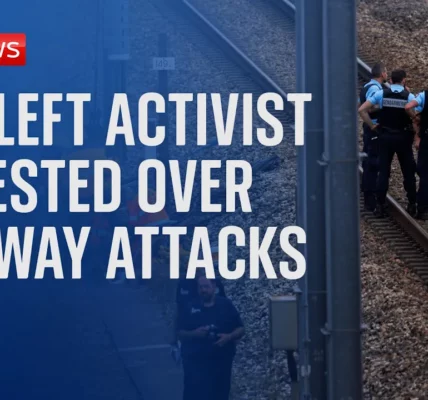The Assassination Attempt on Former President Donald Trump: A Comprehensive Analysis

This article delves into the significant operational failure of the Secret Service during the assassination attempt on former President Donald Trump on July 13th. We explore the implications of this incident, the response from the Secret Service, and the broader context of security for national leaders.
Introduction
The assassination attempt on former President Donald Trump on July 13th has been recognized as one of the most significant operational failures of the Secret Service in decades. This shocking event not only threatened the life of a former president but also raised serious questions about the effectiveness of the protective measures in place. In this article, we will analyze the circumstances surrounding the incident, the immediate response from the Secret Service, and the lessons that must be learned to prevent such a failure in the future.
Overview of the Incident
The events of July 13th unfolded during a public appearance by former President Trump, where a gunman opened fire, leading to chaos and panic. The incident was marked by heroic actions from Secret Service agents who shielded Trump with their own bodies, showcasing their dedication and commitment to their duty.
Casualties and Impact
The shooting resulted in the tragic death of Corey Comparator, a former fire chief, who is being remembered as a hero. Additionally, several individuals, including Butler David Dutch and James Copenhaven, were injured. The consequences of this shooting extend beyond physical harm, impacting the sense of security for public figures and the general populace.
Secret Service’s Response and Accountability
The Director of the Secret Service publicly acknowledged the lapse in security and took full responsibility for the incident. This level of accountability is crucial in rebuilding trust and ensuring that the agency learns from its mistakes.
Security Lapses and Investigations
In the wake of the assassination attempt, the Secret Service initiated a comprehensive investigation to understand what went wrong. This included:
- Activation of the crisis center
- Re-evaluation of existing security plans
- Surging protective resources for the former president
- Assessment of the security plan for the upcoming Republican National Convention
Lessons Learned from the Incident
The incident has highlighted the need for a reevaluation of security protocols and collaboration with local law enforcement agencies. The Secret Service relies on these partnerships to ensure the safety of protectees.
Enhancing Protective Measures
To prevent similar incidents in the future, the Secret Service must focus on several key areas:
- Strengthening collaboration with local and federal law enforcement.
- Implementing advanced training for agents in crisis situations.
- Enhancing intelligence-gathering mechanisms to identify threats early.
- Regularly reviewing and updating security protocols based on evolving threats.
Future Security Challenges
As the Secret Service prepares for upcoming high-profile events, including the Democratic National Convention and the United Nations General Assembly, the challenges of providing adequate security will only increase. The agency must be ready to adapt and respond to a rapidly changing threat landscape.
Resource Allocation and Preparedness
The Secret Service is currently tasked with protecting 36 individuals daily, along with world leaders visiting the United States. Adequate resources must be allocated to handle this unprecedented protection tempo effectively.
Conclusion
The assassination attempt on former President Trump serves as a stark reminder of the vulnerabilities present in the protection of national leaders. The Secret Service has a solemn mission to safeguard these individuals, and the events of July 13th underscore the importance of vigilance and preparedness. It is imperative that the agency learns from this incident and implements necessary changes. We owe it to the heroes who protect our leaders and to the public who depend on their safety. For more insights on government security measures, visit our articles on national security protocols and law enforcement collaboration.
“`




